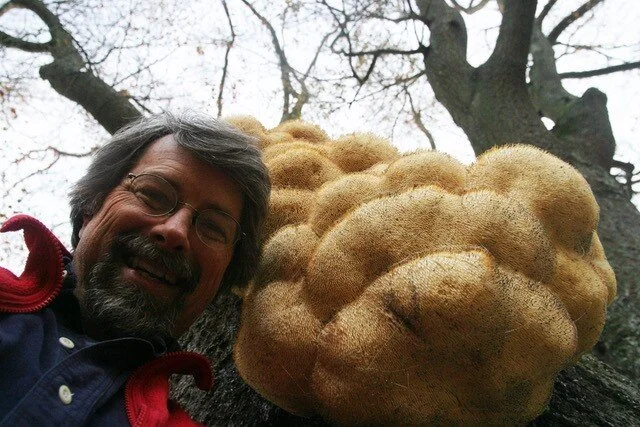How to Forage for Mushrooms without Dying
Mushroom identification can be daunting for beginners, with Latin names and spore prints used to differentiate hard-to-identify mushrooms.
In his new book, How to Forage for Mushrooms without Dying: An Absolute Beginners Guide to Identifying 29 Wild Edible Mushrooms, Frank Hyman focuses on edible mushrooms that are easy to identify.
Easy-to-Identify Edible Mushrooms
Hyman suggests starting with easy-to-identify mushrooms when learning to forage — mushrooms that can easily be distinguished from non-edible ones.
Here are some of the mushrooms that he talks about in this episode:
Chicken of the Woods. “It will look like a pizza sticking our of a tree.”
Morel. Easy to distinguish from the non-edible false morel because the entire interior is hollow when sliced in half from top to bottom (the false morel has chambers within it.)
Black Trumpet (a.k.a. Horn of Plenty). These mushrooms, which look like little bugles, are hollow tubes. Pick it up and look through it length-wise, as if it were a telescope.
Giant Puffball. Slice in half to see that the interior is solid white. “If it’s white like a piece of tofu, you’re good to go,” says Hyman. If you see the outline of a mushroom within, or if it’s not white — don’t eat it.
More than Dinner
Hyman points out that along with the culinary uses of foraged mushrooms, there’s another reason people might consider foraging: It’s a fun outdoor activity; it’s time outdoors, in nature.
Backyard Chickens
Hyman is also the author of the book Hentopia: Create a Hassle-Free Habitat for Happy Chickens; 21 Innovative Projects.
Here is a video in which he talks about backyard chickens.


